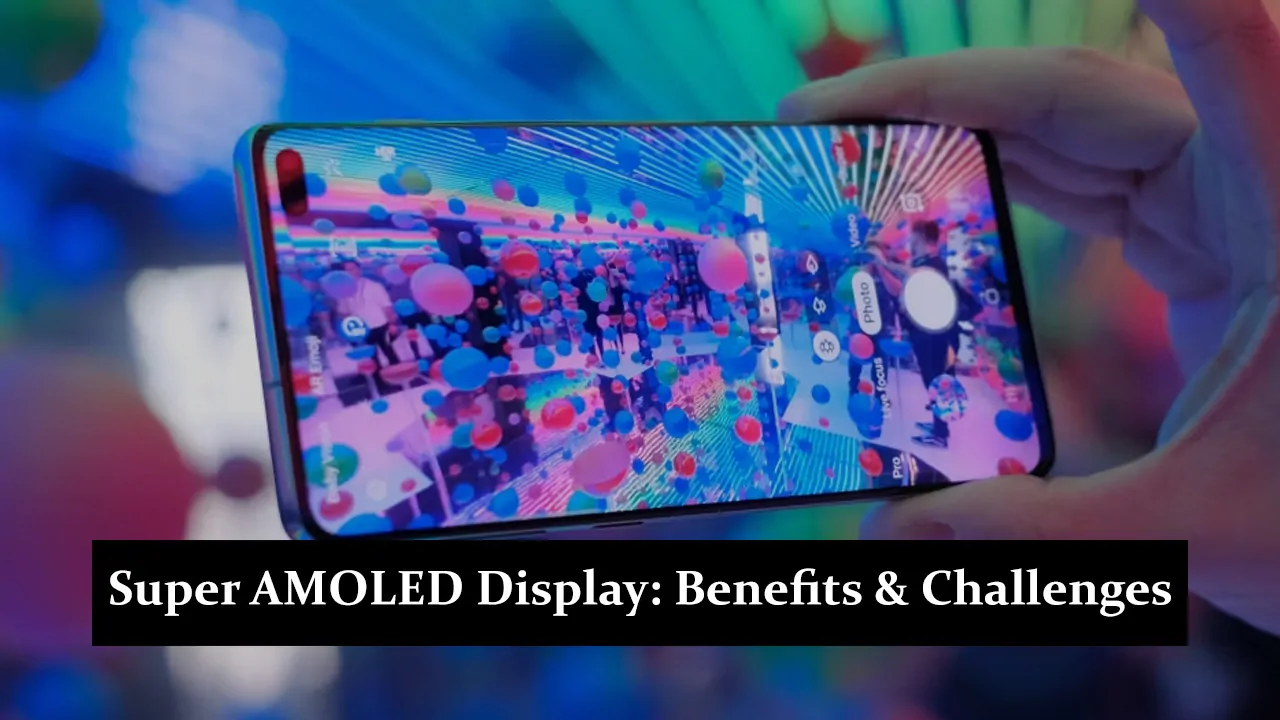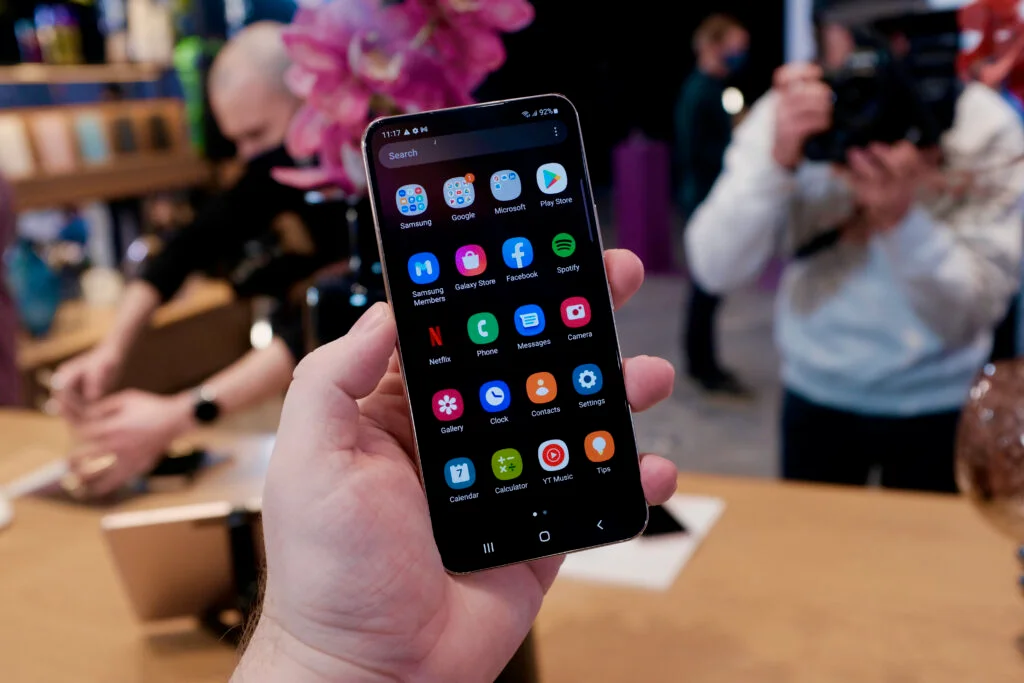Super AMOLED (Super Active-Matrix Organic Light-Emitting Diode) is a display technology widely used in modern devices like smartphones and tablets. It offers brighter colours, deeper blacks, and better power efficiency than traditional displays. What sets Super AMOLED apart is that it integrates the touch sensors directly into the display, making the screen thinner and more responsive. This technology is especially important in today’s devices because it enhances visual quality while saving battery life. As a result, many top brands choose Super AMOLED for their premium devices.
How Super AMOLED Works
Super AMOLED uses individual pixels that emit their light, eliminating the need for a backlight like in LCD screens. Each pixel can be turned on or off independently, which helps in creating perfect blacks and vibrant colours. Unlike traditional AMOLED displays, Super AMOLED integrates touch sensors directly into the display, making it thinner and more responsive. Unlike LCDs, which use a backlight for illumination, Super AMOLED delivers better contrast, deeper blacks, and higher energy efficiency. Super AMOLED is preferred for brighter, sharper, and more power-efficient screens.
Advantages of Super AMOLED Displays
- Deeper Blacks and Higher Contrast: Since each pixel can be turned off completely, Super AMOLED delivers true blacks and high contrast, making images and videos more vibrant.
- Energy Efficiency: Super AMOLED is more power-efficient because it doesn’t require a backlight, meaning it uses less energy, especially when displaying darker content.
- Better Outdoor Visibility: Super AMOLED screens are easier to view in bright sunlight than other display types, thanks to their superior brightness and reduced glare.
- Improved Responsiveness: The integrated touch sensors make Super AMOLED displays more responsive, offering smoother touch interactions. This is ideal for gaming and other activities requiring quick touch response.
Super AMOLED in Smartphones
Super AMOLED technology is widely used in many popular mobile phones, enhancing the user experience with vibrant visuals and smooth touch interactions. Here are some of the top smartphones featuring Super AMOLED displays:
- Samsung Galaxy S21 Ultra
- OnePlus 9 Pro
- Xiaomi Mi 11
- Samsung Galaxy Note 20 Ultra
- Oppo Find X3 Pro
- Google Pixel 6 Pro
These cell phones offer an outstanding experience for gaming, watching videos, and general usage, thanks to Super AMOLED’s rich colour contrast and faster touch response.
Super AMOLED vs Other Display Technologies
| Display Technology | Strengths | Weaknesses |
| Super AMOLED | – Deep blacks and vibrant colours
– Integrated touch sensors for better responsiveness – Energy-efficient with no backlight |
– Prone to screen burn-in over time
– More expensive to produce |
| OLED | – True black levels and high contrast
– Thinner and lighter than LCDs |
– Higher power consumption than Super AMOLED
– No integrated touch layer |
| AMOLED | – Bright, vivid colours and true blacks
– Lower power consumption than LCDs |
– Slightly thicker than Super AMOLED
– May suffer from screen burn-in |
| IPS LCD | – More affordable to produce
– Wider viewing angles and colour accuracy |
– Requires a backlight, reducing contrast
– Less energy-efficient than OLED/AMOLED |
| Mini-LED | – Excellent brightness and contrast
– Less prone to burn-in than OLED – High power efficiency |
– More expensive than traditional LCDs
– Still needs a backlight, though improved |
Challenges of Super AMOLED Technology
- Screen Burn-In: Super AMOLED displays can suffer from burn-in, where static images leave a permanent mark on the screen if displayed for long periods.
- Durability Concerns: The organic materials used in Super AMOLED screens degrade over time, potentially affecting brightness and colour accuracy.
- Higher Manufacturing Costs: Producing Super AMOLED displays is more expensive than traditional LCDs and even some OLED displays, which can lead to higher device costs.
- Complex Manufacturing Process: Integrating touch sensors directly into the display complicates the manufacturing process, making it harder to scale production and maintain quality.
Conclusion
Super AMOLED stands out for its deeper blacks, vibrant colours, energy efficiency, and enhanced responsiveness, making it a top choice for premium displays. Despite challenges like screen burn-in and higher costs, its visual quality and user experience benefits are undeniable. Whether you’re gaming, watching videos, or simply using your smartphone outdoors, Super AMOLED provides an exceptional display experience. These features make it worth the investment, keeping it as one of the most popular display technologies in modern devices.
FAQs
What is Super AMOLED display technology?
Super AMOLED is a type of display technology that integrates touch sensors directly into the screen. It offers brighter colours, deeper blacks, and higher responsiveness than traditional AMOLED displays. It is widely used in modern smartphones for its superior visual quality and power efficiency.
How is Super AMOLED better than AMOLED?
Super AMOLED improves upon AMOLED by integrating the touch layer directly into the display, making it thinner and more responsive. It also offers better visibility in bright light conditions and more efficient power usage, which helps extend the device's battery life.
Are Super AMOLED screens prone to burn-in?
Like other OLED-based technologies, Super AMOLED screens are prone to burn-in. This happens when static images, such as icons or status bars, remain on the screen for extended periods and leave a faint, permanent mark. However, newer devices use various software features to reduce the risk of burn-in.



